This pub is the former Van Dyke cinema. Last used as the Fishponds Social Club Bingo, the site was built in 1926 by WH Watkins. Several cottages were demolished to make way for the building. It showed films for many years, making the almost inevitable transition into a bingo hall in 1973.
A print and text about Mary Robinson.
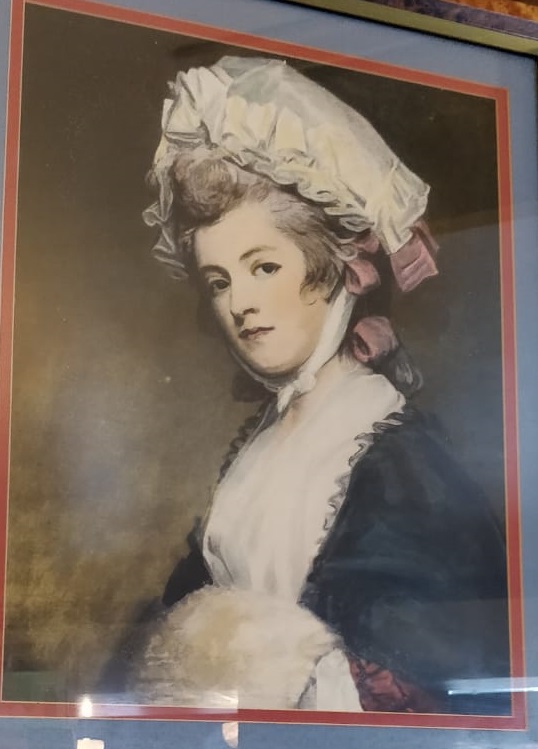
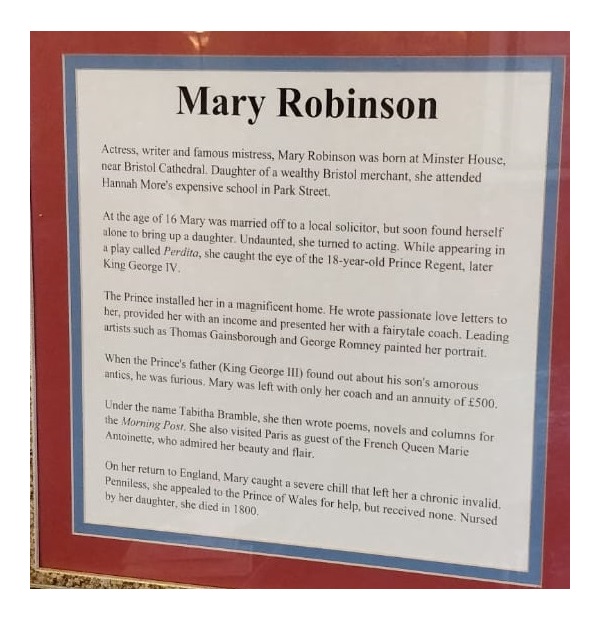
The text reads: Actress, writer and famous mistress, Mary Robinson was born at Minster House, near Bristol Cathedral. Daughter of a wealthy Bristol merchant, she attended Hannah More’s expensive school in Park Street.
At the age of 16 Mary was married off to a local solicitor, but soon found herself alone to bring up a daughter. Undaunted, she turned to acting. While appearing in a play called Perdita, she caught the eye of the 18 year old Prince Regent, later King George IV.
The Prince installed her a magnificent home. He wrote passionate love letters to her, provided her with an income and presented her with a fairy-tale coach. Leading artists such as Thomas Gainsborough and George Romney painted her portrait.
When the Prince’s father (King George III) found out about his son’s amorous antics, he was furious. Mary was left with only her coach and an annuity of £500.
Under the name Tabitha Bramble, she then wrote poems, novels and columns for the Morning Post. She also visited Paris as guest of the French Queen Marie Antoinette, who admired her beauty and flair.
On her return to England, Mary caught a severe chill that left her a chronic invalid, penniless, she appealed to the Prince of Wales for help, but received none. Nursed by her daughter, she died in 1800.
King Charles I on horseback accompanied by M St Antoine, by Sir Anthony Van Dyck.
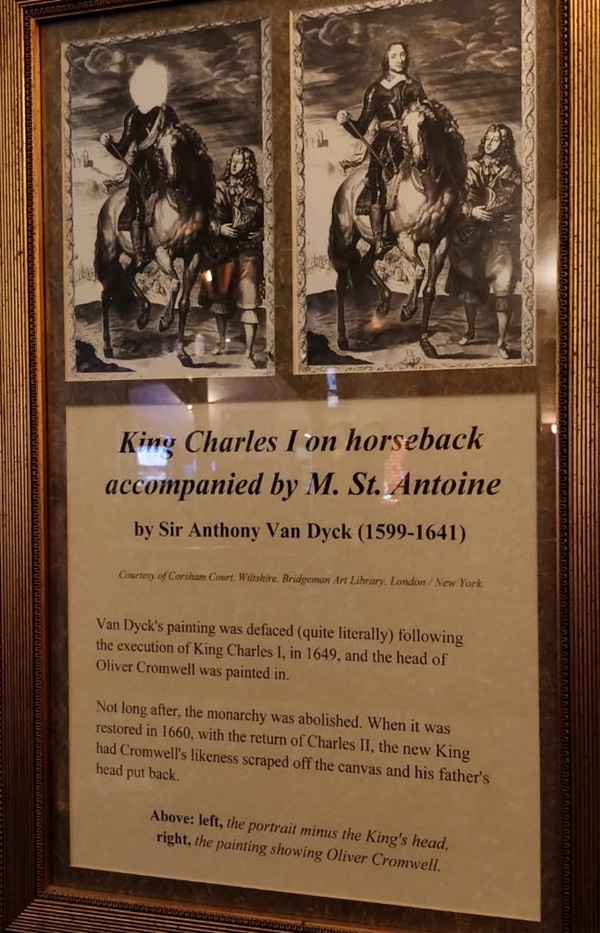
The text reads: Van Dyck’s painting was defaced (quite literally) following the execution of Kings Charles I, in 1649, and the head of Oliver Cromwell was painted on.
Not long after, the monarchy was abolished. When it was restored in 1660, with the return of Charles II, the new King had Cromwell’s likeness scraped off the canvas and his father’s head put back.
Above: left, the portrait minus the King’s head, right. The painting showing Oliver Cromwell.
Text about William Friese-Greene - cinema pioneer.
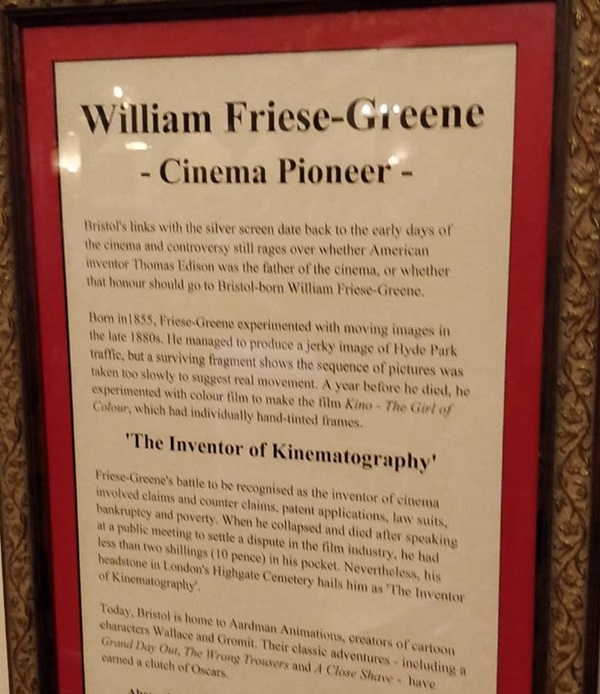
The text reads: Bristol’s links with the silver screen date back to the early days of the cinema and controversy still rages over whether American inventor Thomas Edison was the father of the cinema, or whether that honour should go to Bristol-born William Friese-Greene.
Born in 1855, Friese-Greene experimented with moving images in the late 1880s. He managed to produce a jerky image of Hyde Park traffic, but a surviving fragment shows the sequence of pictures was taken too slowly to suggest real movement. A year before he died, he experimented with colour film to make the film Kino –The Girl of Colour, which had individually hand-tinted frames.
Friese-Greene’s battle to be recognised as the inventor of cinema involved claims and counter claims, patent applications, law suits, bankruptcy and poverty. When he collapsed and died after speaking at a public meeting to settle a dispute in the film industry, he had less than two shillings (10 pence) in his pocket. Nevertheless, his headstone in London’s Highgate Cemetery hails him as ‘The Inventor of Kinematography’.
Today, Bristol is home to Aardman Animations, creators of cartoon characters Wallace and Gromit. Their classic adventures – including A Grand Day Out, The Wrong Trousers and A Close Shave – have earned a clutch of Oscars.
Above: left, William Friese-Greene, right, Thomas Edison
Left: Wallace and Gromit.
Text about Wickham Court.
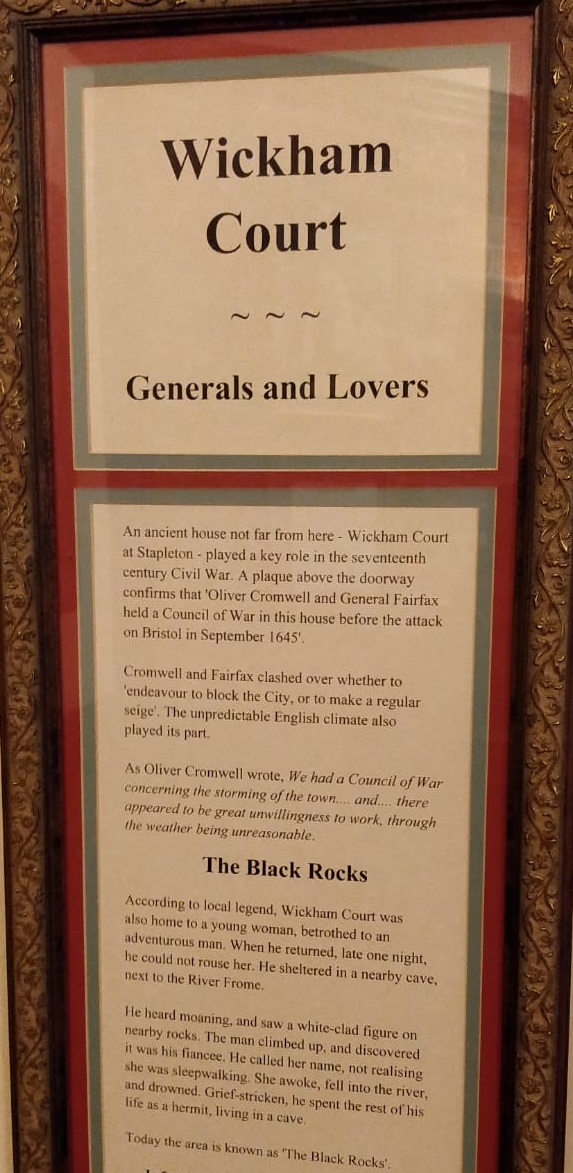
The text reads: An ancient house not far from here – Wickham Court at Stapleton – played a key role in the seventeenth century Civil War. A plaque above the doorway confirms that ‘Oliver Cromwell and General Fairfax held a Council of War in this house before the attack on Bristol in September 1645.’
Cromwell and Fairfax clashed over whether to ‘endeavour to block the City, or to make a regular siege’. The unpredictable English climate also played its part.
As Oliver Cromwell wrote, We had a Council of War concerning the storming of the town… and… there appeared to be great unwillingness to work, through the weather being unreasonable.
According to local legend, Wickham Court was also home to a young woman, betrothed to an adventurous man. When he returned, late one night, he could not rouse her. He sheltered in a nearby cave, next to the River Frome.
He heard moaning, and saw a white-clad figure on nearby rocks. The man climbed up, and discovered it was his fiancée. He called her name, not realising she was sleepwalking. She awoke, fell into the river, and drowned. Grief-stricken, he spent the rest of his life as a hermit, living in a cave.
Today the area is known as ‘The Black Rocks’.
A collection of Sir Anthony Van Dyck’s paintings.
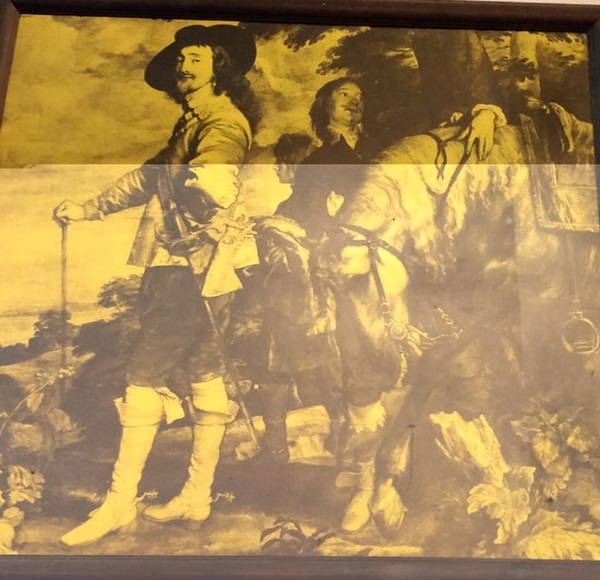
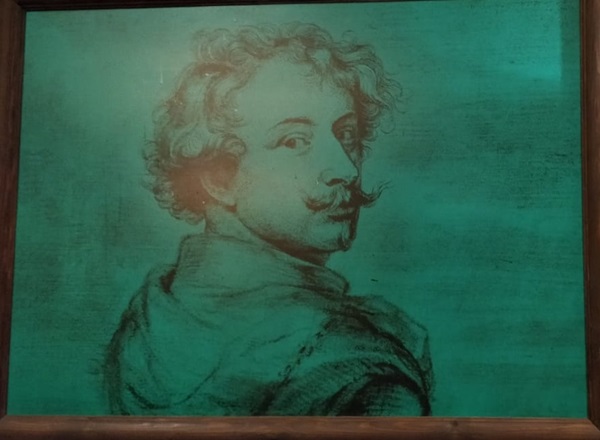
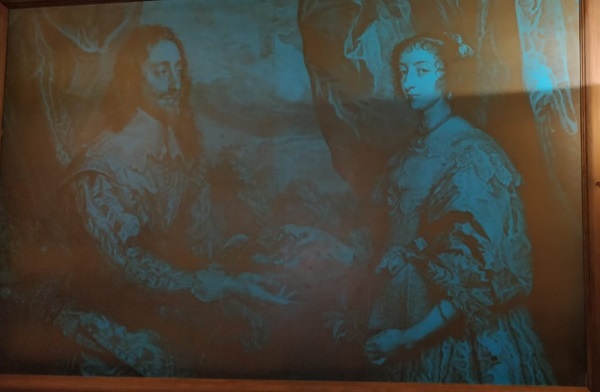
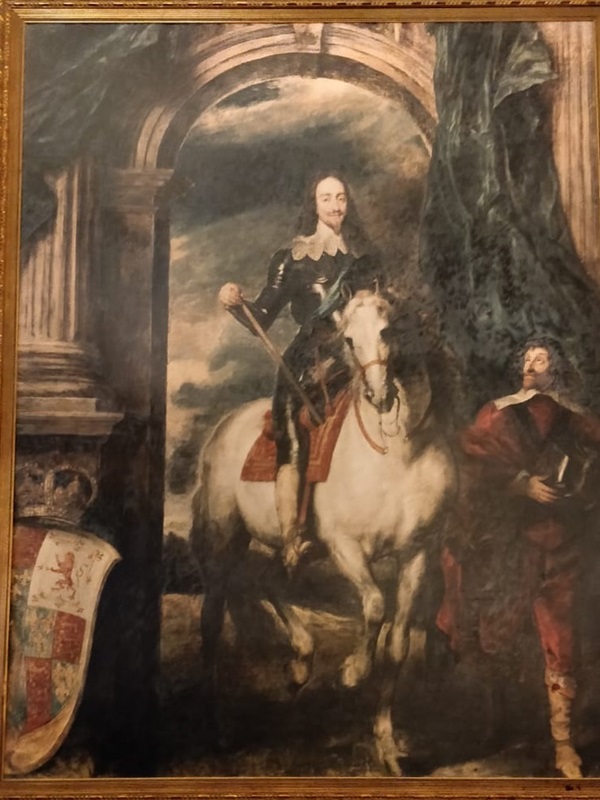
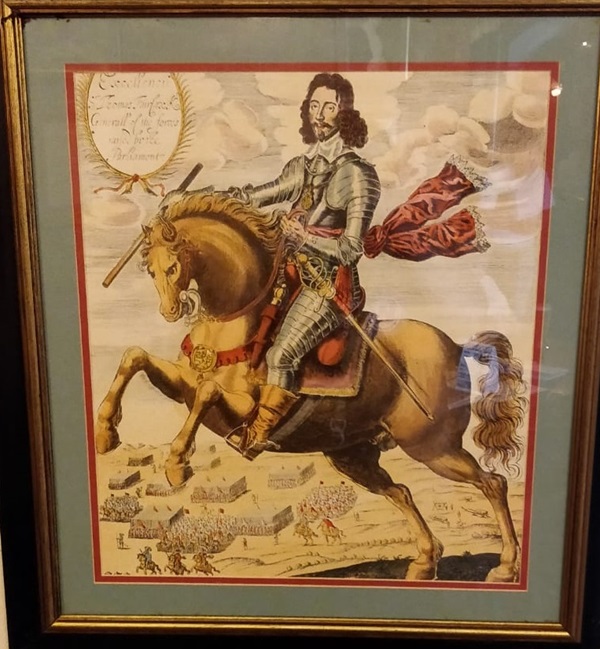
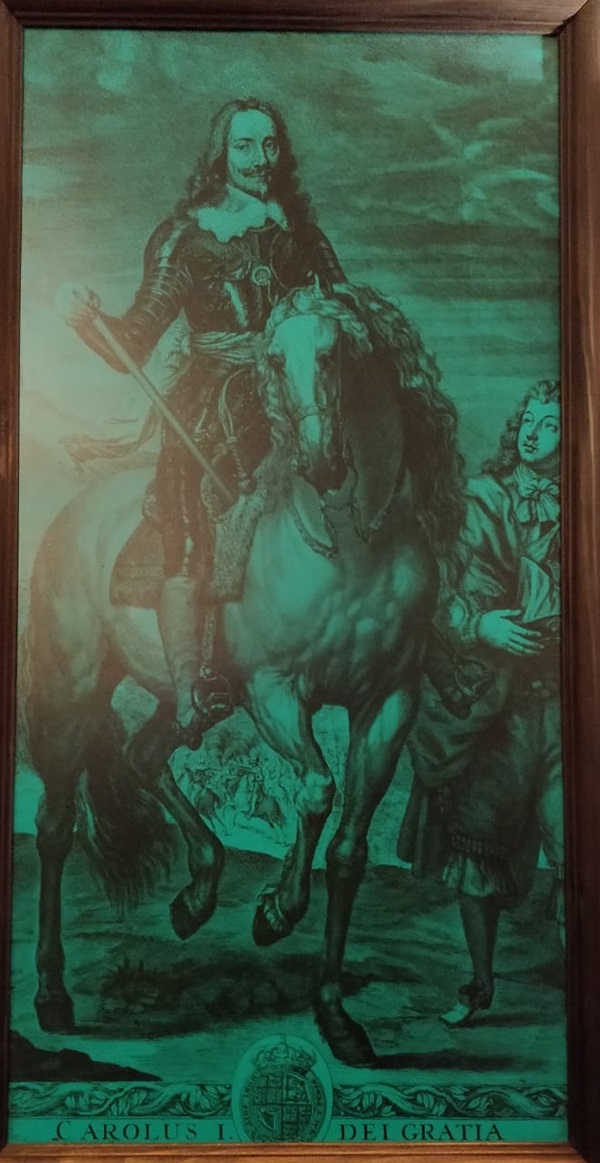
External photograph of the building – main entrance.
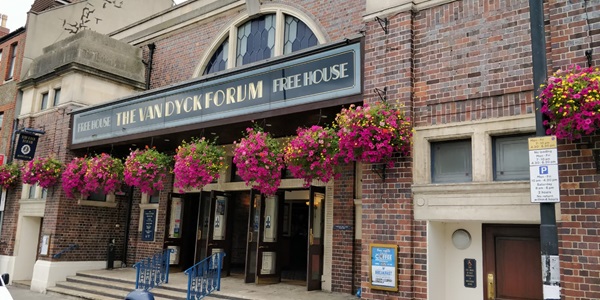
If you have information on the history of this pub, then we’d like you to share it with us. Please e-mail all information to: pubhistories@jdwetherspoon.co.uk